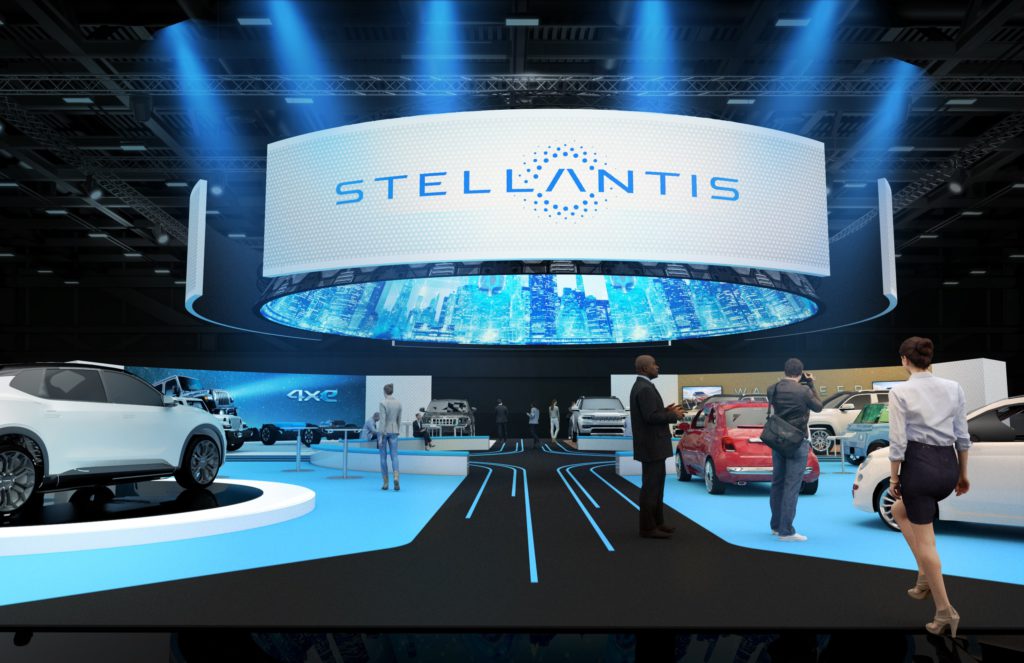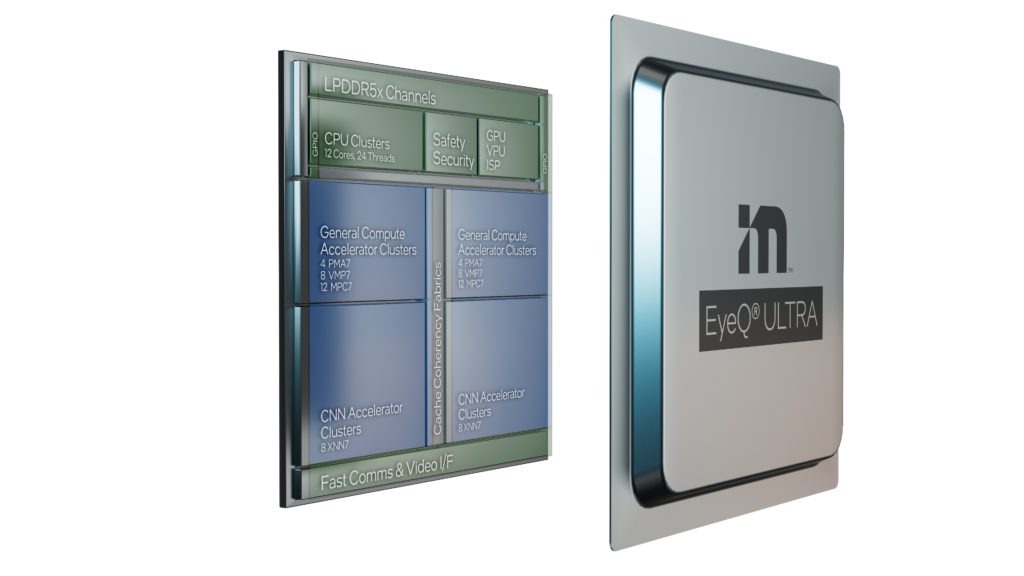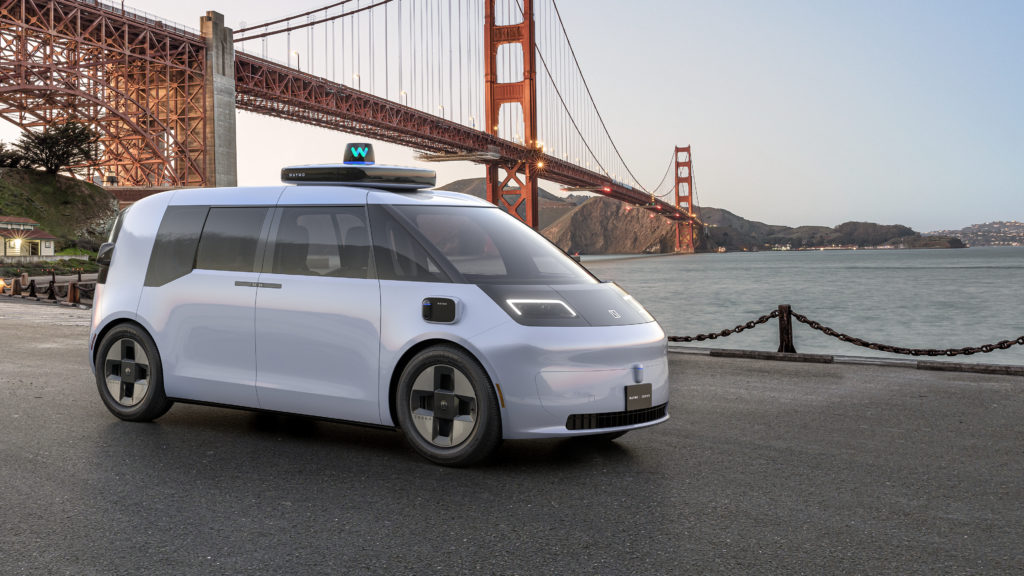CES 2022: Stellantis showcases electric and autonomous-transport technology
06 January 2022

Taking to the stage at CES 2022, Stellantis showcased its predictions for the future of transportation. Members of its 14-brand family demonstrated their commitment to electrification, autonomy, and shared mobility. Some concepts are likely to only ever see the light of day during motor shows, but other announcements held more tangible promise, with delivery deadlines set for 2025.
Stellantis has also established a set of fresh collaborations with Amazon. Thanks to a string of multi-year agreements with the online giant, the OEM will be able to deliver more software-defined vehicles. Correspondingly, Amazon will be the first commercial customer of the new Ram battery-electric vehicle (BEV), set for launch in 2023.
Chrysler leads the charge
Probably the biggest vehicle reveal for Stellantis at this year’s CES was the Chrysler Airflow Concept. The new car is not simply a demonstration of new powertrain technology, but a commitment from the brand to launch its first BEV by 2025, with plans to go all-electric by 2028.
The Airflow concept is powered by two 150kW motors located in the front and rear. It was designed to allow larger motor units, opening up the potential for high-performance applications in the future. The battery is reportedly capable of up to nearly 650km in range on a single charge, as well as fast-charging functionality.
Connectivity is a major building block for the vehicle. Its STLA Brain platform and SmartCockpit create a customised hub for the passenger, which is connected to their digital lives. Screens throughout the car can be personalised, grouped, and shared based on individual interests. Seats are even equipped with a built-in camera so occupants can participate in group video calls.
Over-the-air (OTA) updates will enable the Airflow passengers to add new features and keep it up to date. Software developers will be able to create and update features and services quickly, using inbuilt capabilities without needing to wait for new hardware.
‘The Chrysler Airflow Concept represents the future direction of the Chrysler brand, providing a peek at the dynamic design, advanced technologies and seamless connectivity that will characterise the full-electric portfolio we plan to reach by 2028,’ said Chris Feuell, Chrysler brand CEO.
Citroen’s creative concept
Citroen showed off its mobility solutions for both the present and the future. The My Ami Pop represented the brand’s current offering within the micro-mobility market. As a two-seater electric quadricycle, the Ami exists within a unique niche. The vehicle can be driven by 14-year-olds in France, is affordable, and has small dimensions perfectly suited to urban landscapes.
Leaping forward along the mobility timeline, the French brand also brought its Skate concept to CES 2022. Citroen Autonomous Mobility Vision is designed to free up urban traffic flow with a fleet of interconnected robots. Travelling down dedicated lanes, the skates would be fitted with pods created by different service companies for different purposes. Users would gain 24/7 access to the service of their choice, from a family-friendly space to a gym or a media lounge.
Stellantis also drew attention to Fiat’s New 500, the latest all-electric version of the iconic model. Currently available in Europe, Israel and Brazil, the model will be launched in Japan this year. It sports a range of up to 320km (WLTP), which increases to 460km in the urban cycle. Equipped with SAE Level 2 assisted driving, the car is offered in three different body styles: hatchback, cabrio and 3+1.
The automotive giant also displayed the DS E-TENSE FE21 at CES, a single-seater Formula E car. The luxury marque uses motorsports as a testbed for its latest electric technology, with a focus on software. As of 2024, DS will only launch BEVs, making this competitive development process critical. Stellantis also showcased plug-in hybrid (PHEV) models, the Jeep Wrangler 4xe and the Grand Cherokee 4xe. There was also the Wagoneer and Grand Wagoneer, first seen in March last year.
Two industry giants
Regarding the new agreements with Amazon, the internet giant will employ its technological and software expertise to advance the carmaker’s vehicle development, connected capabilities, and training. Part of the multi-year arrangements will see Stellantis using Amazon Web Services (AWS) as its preferred cloud provider for vehicle platforms.
Another connected focus of these collaborations will be the STLA Smart Cockpit. The system will feature in Stellantis vehicles from 2024 and will integrate with customers digital lives to create a personalised in-vehicle experience. This will mean AI-enhanced applications, Alexa-enabled voice assistance, navigation, vehicle maintenance, e-commerce marketplaces, and payment services.
‘Working together with Amazon is an integral part of our capability-building roadmap, based on both developing internal competencies and decisive collaborations with tech leaders, and it will bring significant expertise to one of our key technology platforms, STLA SmartCockpit,’ said Carlos Tavares, CEO of Stellantis. ‘By leveraging artificial intelligence and cloud solutions, we will transform our vehicles into personalised living spaces and enhance the overall customer experience, making our vehicles the most wanted, most captivating place to be, even when not driving.’
Since 2018, Stellantis has provided tens of thousands of light-commercial vehicles (LCVs) to Amazon. These support its last-mile operations in North America and Europe. As the online retailer looks to go net-zero by 2040, it will become the first commercial customer of the new Ram ProMaster BEV launching in 2023. Designed with unique last-mile delivery features, the vehicles will be deployed to routes across the US.
‘We are excited to collaborate with Stellantis to transform the automotive industry and re-invent the in-vehicle experience,’ said Andy Jassy, CEO of Amazon. ‘We are inventing solutions that will help enable Stellantis to accelerate connected and personalised in-vehicle experiences, so that every moment in motion can be smart, safe, and tailored to each occupant. Together, we will create the foundation for Stellantis to transform from a traditional automaker into a global leader in software-driven development and engineering.’



